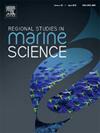Forecasting coastal stability: Digital shoreline analysis system and machine learning techniques in evaluating Impacts of cyclones
IF 2.1
4区 环境科学与生态学
Q3 ECOLOGY
引用次数: 0
Abstract
The eastern and western shores of India are affected by tropical cyclones, which lead to serious socio-environmental issues. This study analyzed shoreline changes caused by cyclone Gaja and Michaung in South eastern coastal zone of India. The goal of this study is to evaluate shoreline change rates at two significant Indian regions that are frequently hit by cyclones. Two significant cyclones, the Gaja cyclone in Tamilnadu and the Michaung cyclone in Andhra Pradesh, defined the study regions. Multi-temporal satellite imagery and an ArcGIS-based DSAS model program were employed to detect and quantify changes along the coastline, focusing on erosion and sedimentation dynamics. The study, in conjunction with shoreline accretion and erosion patterns, analyzed three decades (1993, 2003, 2013, and 2023) of Landsat images. It employed three DSAS statistical models: Net Shoreline Movement (NSM), End Point Rate (EPR), and Linear Regression Rate (LRR). The software automatically computes confidence intervals, typically at the 95 % level, for each rate of change. Accretion and erosion occur along the shoreline at different rates, according to these data. The average rate of accretion is approximately + 9 m/year along the Kodiyakarai area and + 28 m/year along Elachetladibba. The highest erosion rate is approximately −16 m/year in the Kodiyakarai coastal zone and −25 m/year in the Diviseema coastal zone.
求助全文
约1分钟内获得全文
求助全文
来源期刊

Regional Studies in Marine Science
Agricultural and Biological Sciences-Ecology, Evolution, Behavior and Systematics
CiteScore
3.90
自引率
4.80%
发文量
336
审稿时长
69 days
期刊介绍:
REGIONAL STUDIES IN MARINE SCIENCE will publish scientifically sound papers on regional aspects of maritime and marine resources in estuaries, coastal zones, continental shelf, the seas and oceans.
 求助内容:
求助内容: 应助结果提醒方式:
应助结果提醒方式:


